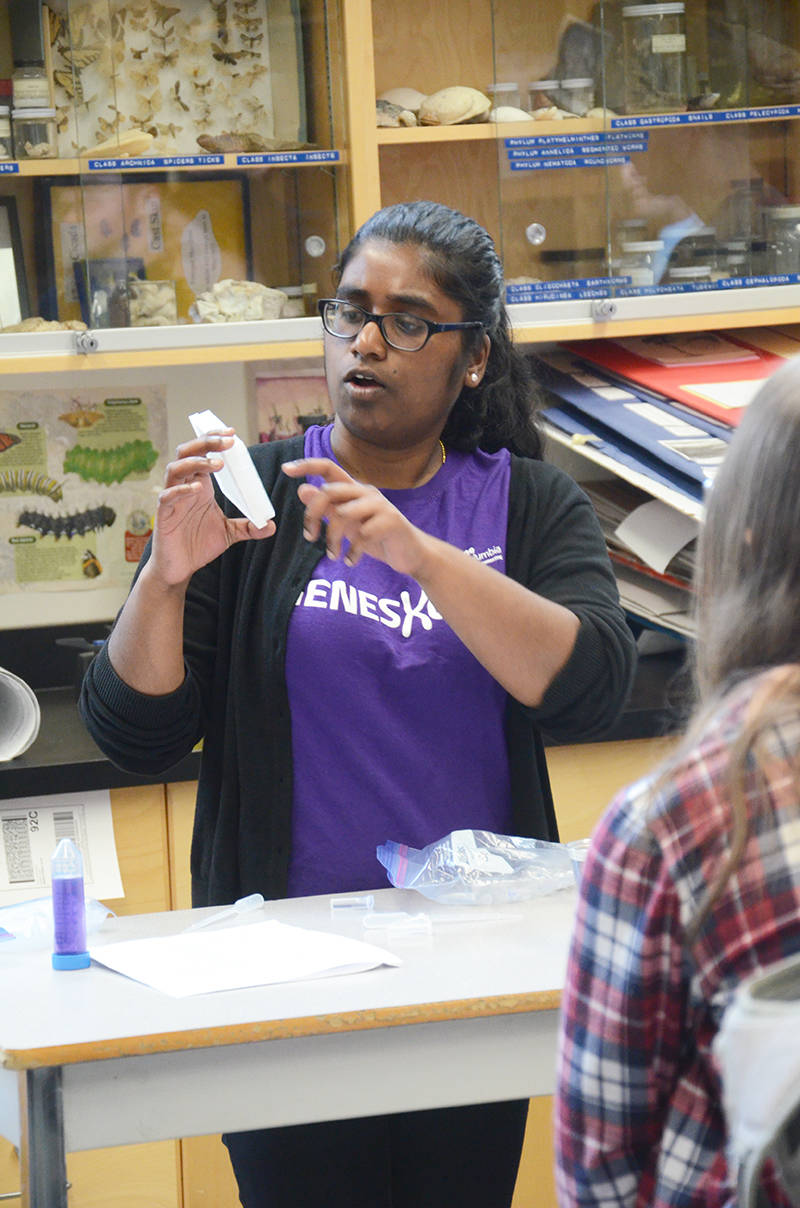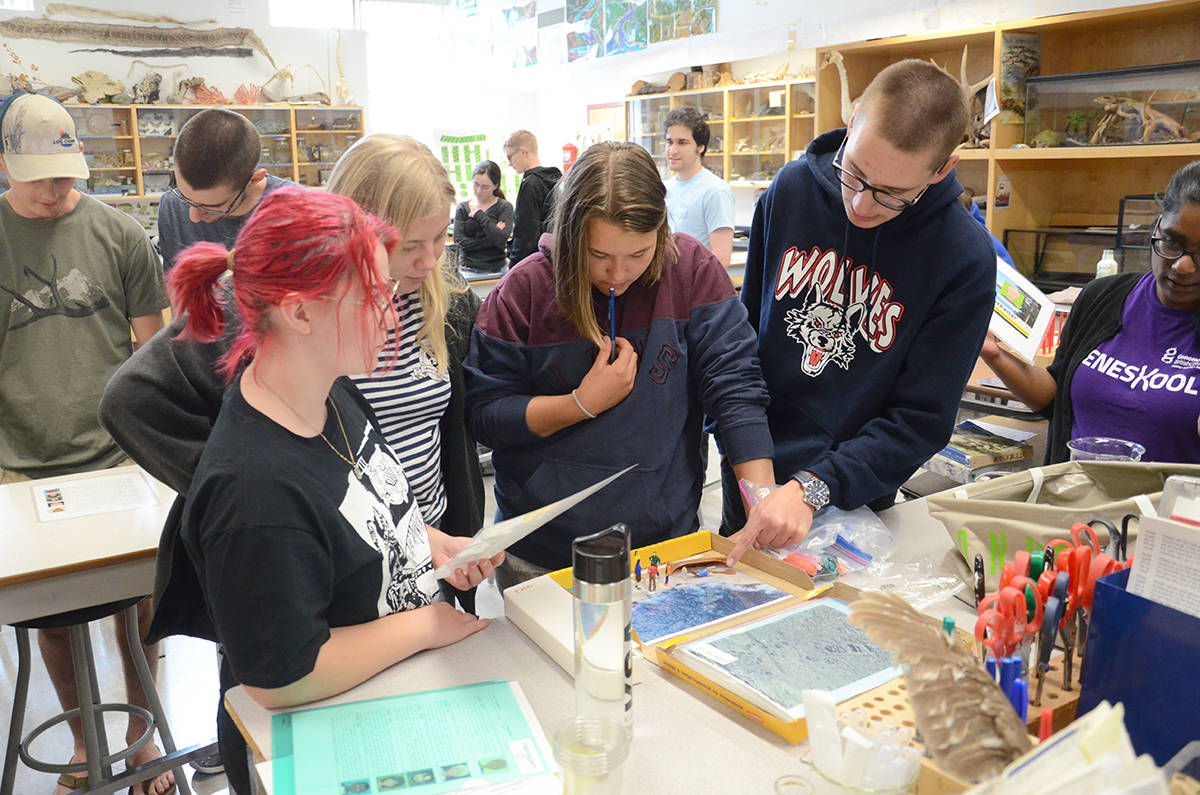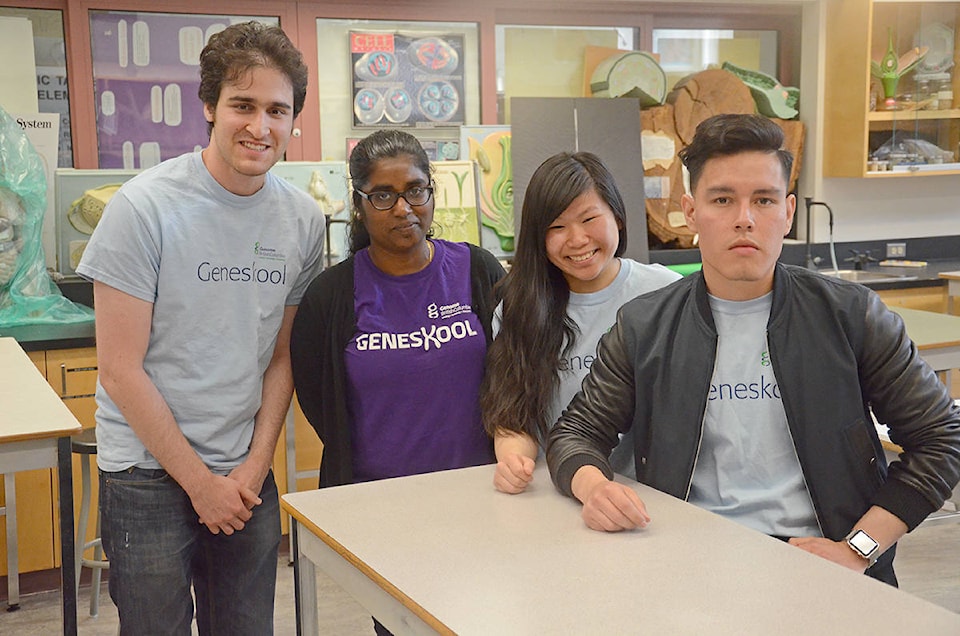Some local secondary students helped solve a murder recently – not a real one, but as part of a program to learn more about genetics.
The provincial organization Genome BC Geneskool brought a team to Timberline Secondary on Monday, May 13 to show applications of how biology can help with real-life situations involving genetics and genomics, the branch of molecular biology focused on genomes.
“We do workshops in schools teaching students genetics, trying to get them more interested in science,” says Geneskool member Hema Ratnasami, who did her undergraduate work in biochemistry and molecular biology at UNBC.
In one block with teacher Dan Klinka’s Grade 11 students, Ratnasami and colleague Hakhamanesh “Hawk” Behmanesh ran the students through a crime scenario in which six friends go on a three-day canoe trip in northern B.C. and one of them is murdered. Meanwhile, Sally Ou and Victor Hernandez were running through applications with students in Natasha Ubriaco’s class next door.
For the murder scene, the Geneskool team used props and information to lead the students through steps to help them solve the crime.
“A lot of these activities tend to be very hands-on,” says Behmanesh. “They tend to work together as a team trying to solve the mystery. At the same time, they’re learning about techniques that real scientists would use every day.”
The process starts with background information about the canoe trip participants, including the victim, then moves on to using footprints as a way to reduce the number of suspects. From there, the students use blood type to further zone in on who was responsible, ultimately getting the number down to two.
“Once they start doing the testing, they start narrowing it down,” says Behmanesh, who is studying undergraduate biology at UBC.
From there, the class uses gene mapping as a way to differentiate the suspects and point out the guilty party. Ratnasami says students typically end up heading in the right direction when it comes to the clues.
“They’re pretty smart,” she says. “They come up with great theories with all the evidence that they’ve gathered.”
RELATED STORY: Campbell River students get their hands on some molecules
The members of Geneskool are studying in fields of science themselves, so it offers them an opportunity to share what they are learning and already know with younger students in the hopes of inspiring them and showing them how science relates to real life.
“These are undergraduate students,” says Klinka. “This is something they’re doing to expand their own educational opportunities.”
He appreciates the chance to bring in the university students to help show his secondary students how biology and real life intersect.
“It’s just a cool opportunity to showcase different types of hands-on learning,” he says.


